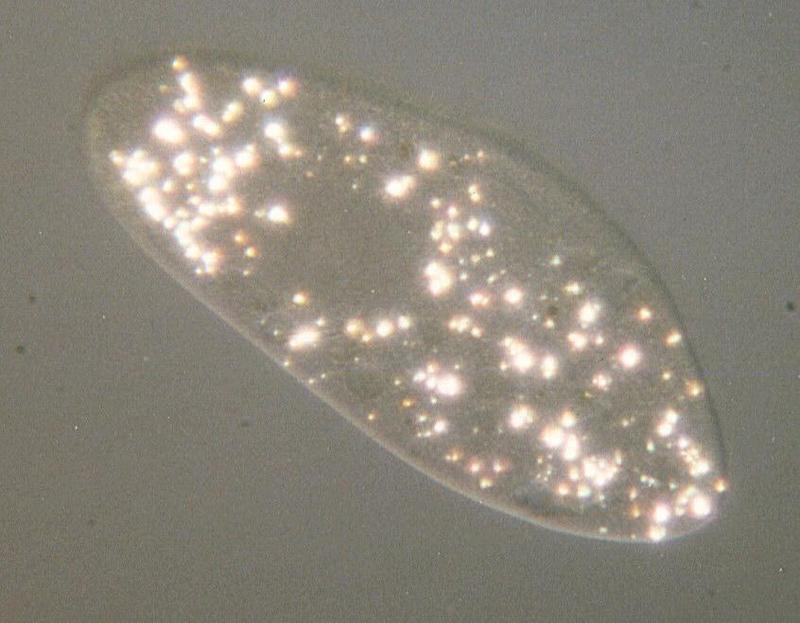Protozoa - Paramecium caudatum part two - polarized light Hi again,
in one of my last postings featuring Paramecium caudatum I mentioned the
small, sand-grain-like particles in the organism's body but refused to
explain them to you unless having posted the appropriate image of the
matter.
Now, here it comes; this is definitely something different from the
shots I have been posting so far. This photo brings me nicely to making
you familiar with another technique of illumination. I explained
yesterday that my postings so far have been made using either
brightfield or phase contrast illumination. This one, however, was made
with a polarized light source. Polarizing, in brief, means reducing the
light to just one axis of oscillation by using a filter. If you use two
filters whoses axes of transmission have a 90? angle - " crossed
filters" - almost no light can pass and the whole scenery becomes dark.
Certain substances, however, have the ability of shifting the axis of
polarized light. In this case the substance becomes visible if placed
between "crossed" polarization filters. Crystals of inorganic salts, for
example, have that ability.
That is exactly what the small particles in Paramecium's body are about.
Paramecium, in short, creates stockpiles of inorganic salts. This is not
mainly for making these available in case of food shortage; it is, much
more important, Paramecium's way to maintain the ionic balance of its
protoplasma. As you may know, there is a parameter called osmotic
pressure which is important on the cellular level of life. It means, in
brief, that no cell can survive if the liquid outside the cell contains
much more or less dissolved substance than the cell liquid itself.
Paramecium can do both re-dissolve its salt stock if necessary and get
dissolved substances out of the way by crystallizing them. The result
can bee seen here; apart from the nucleus, Paramecium's whole body is
packed with crystals.
Sorry for being long-winded but I think that one needed a bit of
explanation. I shall hopefully be able to shorten it a bit in my future
postings as I can refer to the pics I have been posting before. If you
missed one of those or your server didn't have it just e-mail me; I
shall provide you with the text files as well as with the pictures.
So long,
Ralf
Content-Type: image/jpeg; name="Paramecium2.jpg"
